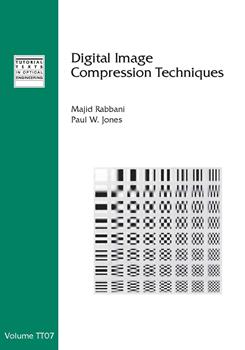|
Information, in its many forms, is a valuable commodity in today's society, and the amount of information is increasing at a phenomenal rate. As a result, the ability to store, access, and transmit information in an efficient manner has become crucial. This is particularly true in the case of digital images. A large number of bits is typically required to represent even a single digital image, and with the rapid advances in sensor technology and digital electronics, this number grows larger with each new generation of products. Furthermore, the number of digital images created each day increases as more applications are found.
In order to utilize digital images effectively, specific techniques are needed to reduce the number of bits required for their representation. The branch of digital image processing that deals with this problem is called image compression (also picture coding). A wide range of techniques has been developed over the years, and novel approaches continue to emerge. The goal of this book is to lay the groundwork for understanding image compression techniques and to present a number of specific schemes that have proven to be useful. The algorithms discussed in this book are mainly concerned with the compression of continuous-tone, still-frame, monochrome and color images. A consistent image set has been used to illustrate the effect of each compression technique on typical images, thus allowing for a direct comparison of bit rates and reconstructed image quality. However, an important point to consider when viewing these images is that due to limitations of the printing reproduction process, the resolution of these printed images may not be adequate to reveal subtle differences between the various techniques.
This book is divided into four parts. Part I is an introduction to the process of digital image formation and outlines the need for image compression as well as related worldwide standardization activities. Part II presents an overview of information theory concepts commonly used in image compression. The aproach in this part is to give the reader a fel for utility of information theory, and no attempt is made to be mathematically rigorous. The concepts are of general utility in the compression of both bilevel and continuous-tone images. Part III describes techniques for the lossless compression of images, that is, techniques that allow the original image to be reconstructed exactly after compression. Part IV covers the field of lossy image compression as applied to still, continuous-tone images, where much lower bit rates are achieved as compared to lossless techniques, at the expense of errors in the reconstructed image. This part also includes a chapter on hierarchical coding techniques (which may be lossless or lossy). Finally, an appendix on the compression of color images is included.
|



